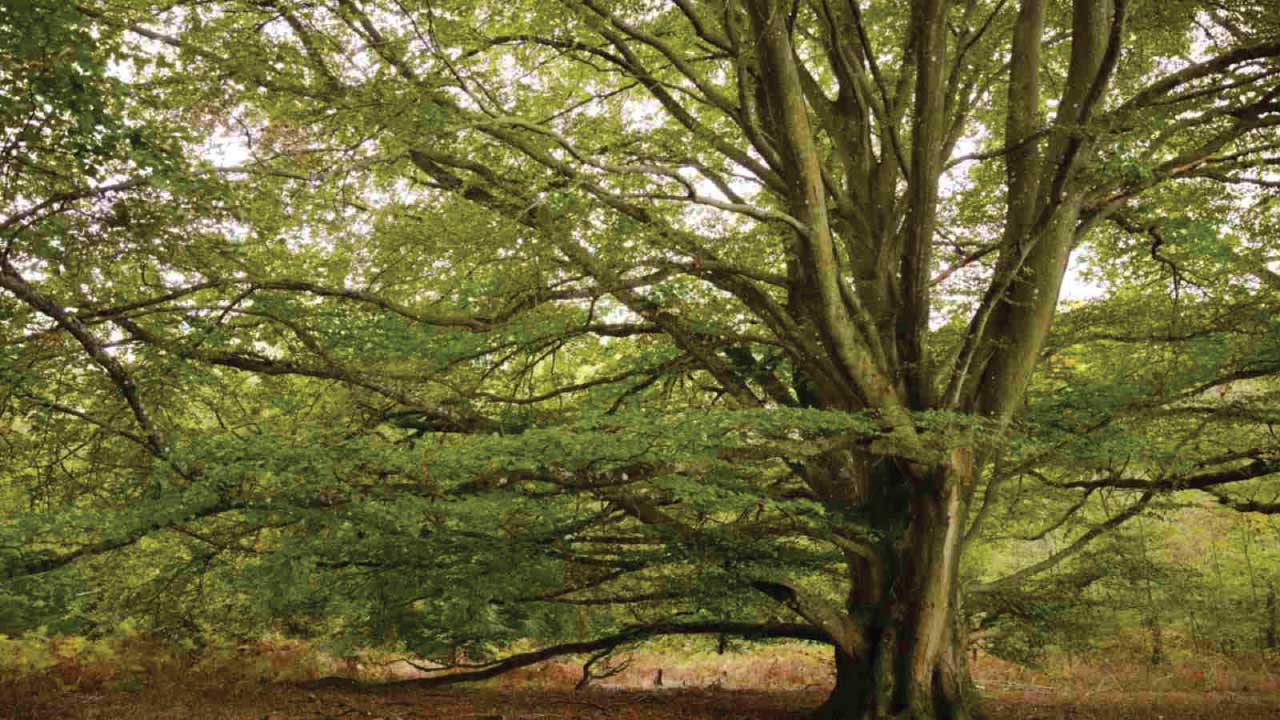Beech trees are magnificent, deciduous trees known for their smooth, gray bark, dense foliage, and graceful appearance. Native to Europe, Asia, and North America, beeches are often used in landscaping for their beauty and longevity. This guide will cover everything you need to know about planting, growing, and caring for beech trees.
1. Introduction to Beech Trees
Beech trees belong to the genus Fagus and are widely recognized for their stately form and lush canopy. They can grow up to 100 feet tall and live for hundreds of years, making them a popular choice for large landscapes and parks. The most common species include the European beech (Fagus sylvatica) and the American beech (Fagus grandifolia).
2. Types of Beech Trees
2.1 European Beech (Fagus sylvatica)
The European beech is widely cultivated for its attractive appearance and variety of forms. It has smooth, silver-gray bark and dark green leaves that turn a striking golden brown in the fall. There are several cultivars, including:
- Copper Beech: Known for its deep purple foliage.
- Weeping Beech: Features cascading branches, creating a unique, umbrella-like shape.
2.2 American Beech (Fagus grandifolia)
Native to eastern North America, the American beech is similar in appearance to the European beech but has slightly larger leaves with a more serrated edge. It is known for its golden-yellow fall color and smooth, light gray bark.
3. Planting Beech Trees
3.1 Choosing the Right Location
It prefer well-drained, fertile soil and can thrive in full sun to partial shade. They require ample space to grow, so it’s important to plant them in a location where they have room to spread both above and below ground.
3.2 Soil Requirements
It do best in soil that is slightly acidic to neutral (pH 5.0 to 6.5). The soil should be well-drained but retain some moisture. Heavy clay or overly sandy soils can be amended with organic matter to improve drainage and fertility.
3.3 Planting Process
- Timing: The best time to plant this tree is in the fall or early spring when the tree is dormant.
- Planting Hole: Dig a hole that is twice as wide and as deep as the root ball. Loosen the soil at the bottom of the hole to encourage root growth.
- Planting Depth: Place the tree in the hole so that the root flare (where the roots begin to spread out from the trunk) is level with or slightly above the soil surface.
- Backfilling: Fill the hole with soil, gently tamping it down to eliminate air pockets. Water thoroughly after planting.
4. Caring
4.1 Watering
Young trees need regular watering, especially during dry periods. Water deeply to encourage deep root growth, but be careful not to overwater, as beech trees are sensitive to waterlogged soils.
4.2 Mulching
Apply a 2-3 inch layer of mulch around the base of the tree to help retain moisture and regulate soil temperature. Keep the mulch a few inches away from the trunk to prevent rot.
4.3 Pruning
Prune the trees in late winter or early spring to remove dead or damaged branches and to shape the tree. Beech trees generally require minimal pruning, but regular maintenance can help keep them healthy and attractive.
4.4 Fertilizing
It do not require heavy fertilization. A balanced, slow-release fertilizer applied in early spring can support growth, especially in poor soils. Avoid over-fertilizing, as this can harm the tree.
5. Beech Tree Pests and Diseases
5.1 Beech Scale
Beech scale is a common pest that affects beech trees, particularly the American beech. These tiny insects feed on the tree’s bark, creating a white, woolly coating. Severe infestations can lead to bark disease and tree decline. To manage beech scale, remove affected bark and apply horticultural oil or insecticidal soap.
5.2 Beech Bark Disease
This disease is caused by a combination of beech scale and fungal infection, leading to cankers and the eventual death of the tree. Managing beech bark disease involves controlling the scale population and removing infected trees to prevent the spread of the fungus.
5.3 Powdery Mildew
It can also be affected by powdery mildew, a fungal disease that creates a white, powdery coating on the leaves. While typically not life-threatening, it can weaken the tree over time. Improve air circulation around the tree and apply a fungicide if necessary.
6. Uses of Beech Trees in Landscaping
They are versatile and can be used in various landscape settings:
- Shade Trees: Due to their dense canopy, beech trees are excellent for providing shade in large gardens or parks.
- Hedges and Screens: Beech trees, particularly the European beech, can be pruned into formal hedges or screens, providing privacy and wind protection.
- Specimen Trees: Their majestic form makes beech trees an excellent focal point in any landscape.
7. Beech Tree Benefits
They offer several environmental benefits:
- Wildlife Habitat: Beech trees provide food and shelter for various wildlife, including birds, mammals, and insects.
- Erosion Control: Their extensive root systems help stabilize soil and prevent erosion on slopes.
- Air Purification: Beech trees improve air quality by absorbing carbon dioxide and releasing oxygen.
8. Conclusion
Beech trees are a beautiful and resilient choice for any large landscape. With proper care, they can provide shade, beauty, and environmental benefits for generations. Whether you choose a European beech for its variety of forms or an American beech for its native charm, these trees are sure to be a treasured part of your garden.
By following this guide, you’ll be well-equipped to plant, grow, and care for beech trees, ensuring they thrive and enhance your landscape for years to come.
